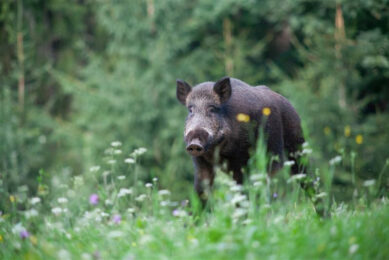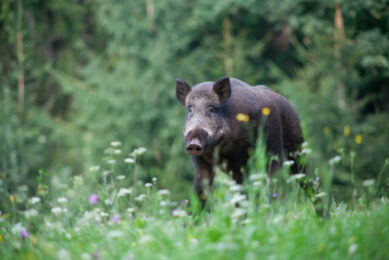Salmonella testing – is it going to cause a problem for you?
The new EU Salmonella control regulations (EC No 2160/2003) for monitoring finishers will end in October this year and EU industry targets will be set in November – will this affect you?
The new EU Salmonella control regulations (EC No 2160/2003) for monitoring finishers will end in October this year and EU industry targets will be set in November – will this affect you?
In the UK they have been using the meat-juice ELISA test at slaughter, like the Danes, for the last three years and there has been no real change in the prevalence, which stubbornly remains at about 27%. The industry is starting to panic, as they are not sure if they can bring the levels down to what may need when the new target levels are set.
Salmonella conference
At a recent conference in the UK ‘Serious about Salmonella’, the issue was reviewed. England has one of the highest levels (currently about 30% positive) in Europe, whereas Scotland and Northern Ireland have much lower levels, almost one third of the English figure and more in line with the rest of Europe.
At a recent conference in the UK ‘Serious about Salmonella’, the issue was reviewed. England has one of the highest levels (currently about 30% positive) in Europe, whereas Scotland and Northern Ireland have much lower levels, almost one third of the English figure and more in line with the rest of Europe.
So what makes England so bad? Is it the lack of hygiene between batches of pigs or is it the solid-floor, scrape-through dunging systems that are so prevalent, which permits the spread of the infection amongst finishing pigs?
Clinical PMWS
Does the comparatively high level of clinical PMWS have an impact on reducing the pig’s gut immunity and increasing infection?
Does the comparatively high level of clinical PMWS have an impact on reducing the pig’s gut immunity and increasing infection?
The English system uses antibodies in the meat as the marker and this does not mean the pig or meat is still infected, but is a historic marker that the pig has been challenged at some time (see Figure 1).
| Figure 1. Salmonella Typhimurium – Comparison of faecal and serological positives (based on Kranker et al, 2002). |
The pigs may have been challenged at the back end of the nursery, but would still be showing high serological positives in the finisher pigs.
Volatility
One other concern expressed by producers is the volatility and variability of the results by meat juice ELISA; sometimes the score is low, sometimes high and there appears to be little correlation with hygiene measures etc between batches.
One other concern expressed by producers is the volatility and variability of the results by meat juice ELISA; sometimes the score is low, sometimes high and there appears to be little correlation with hygiene measures etc between batches.
I think the graph indicates that the timing of the infection as well as the severity is important.
If the challenge peaks at 16 weeks of age instead of eight weeks almost 100% of the exposed pigs could be sero-positive at slaughter based on meat juice ELISA and I think this is the reason for some of the volatility in the results.
How are your countries planning to reduce salmonella infections in pigs and how are you planning to monitor it when new national control plans will be approved in April 2008?











